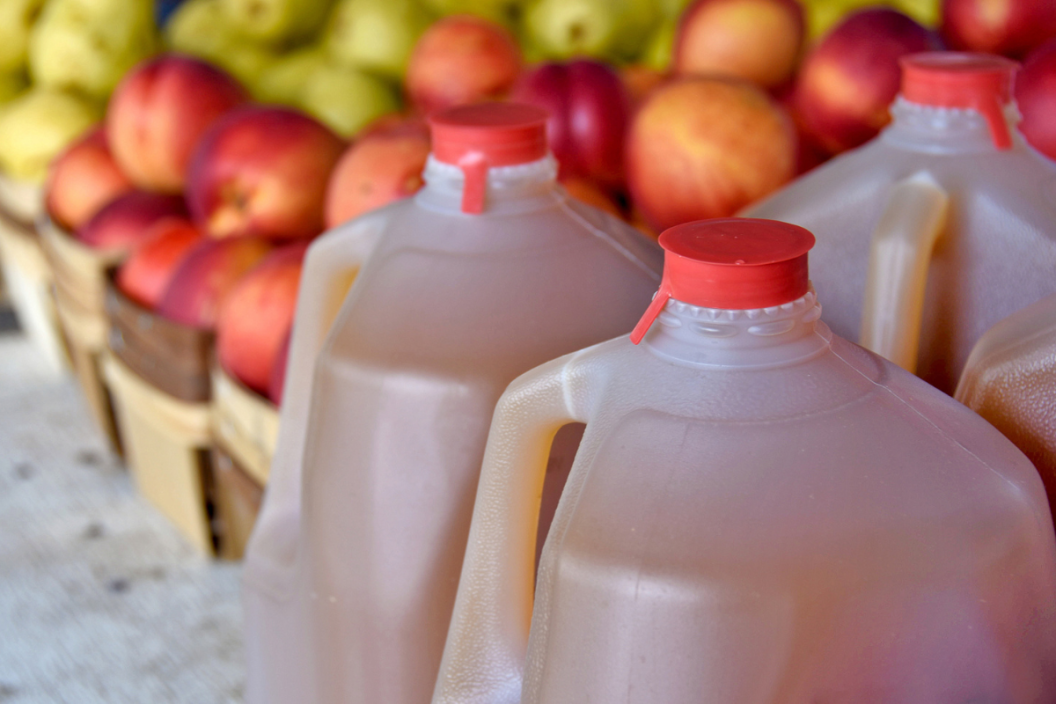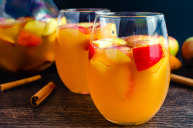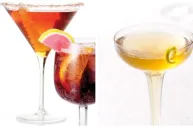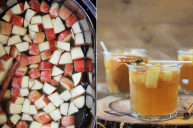Autumn may be pumpkin spice season, but it's also prime apple season, so you may be headed out to your local orchard soon for apple picking. In addition to the orchard, there's often a cool little farm stand or cider house brimming with the bouquet of cinnamon, brown sugar, cloves and nutmeg. Think: caramel apples, apple doughnuts, and apple cider.
Or is it apple juice? And is there actually any difference between apple juice and apple cider? Let's queue up the history:
Steven Grasse writes in his book "Colonial Spirits" that colonists brought apples with them to North America in 1623. They found the crab apple (the only apple native to North America) waiting for them here, but it wasn't what they were accustomed to, so they planted apple seeds-first in Plymouth and Boston, and then throughout the colonies. The primary purpose of the fruit was, of course, consumption-both by humans and livestock-but a surprisingly large portion of the colonists' crop was devoted to cider and cider vinegar production.
What colonists called "cider" is what we call "hard cider" today: It's apple cider that has fermented into an alcoholic beverage. Everyone drank cider, even children (though they tended to get a watered-down version called "ciderkin" sweetened with ginger and molasses). In fact, Grasse writes that by the time the American Revolution ended, one in 10 farms in New England made its own cider. Even as American-produced beer and whiskey grew in popularity, cider held its own.
But when America enacted Prohibition in 1920, hard cider pretty much vanished. Companies that had mass-produced it, such as California company Martinelli's, had to refocus on non-alcoholic beverages.
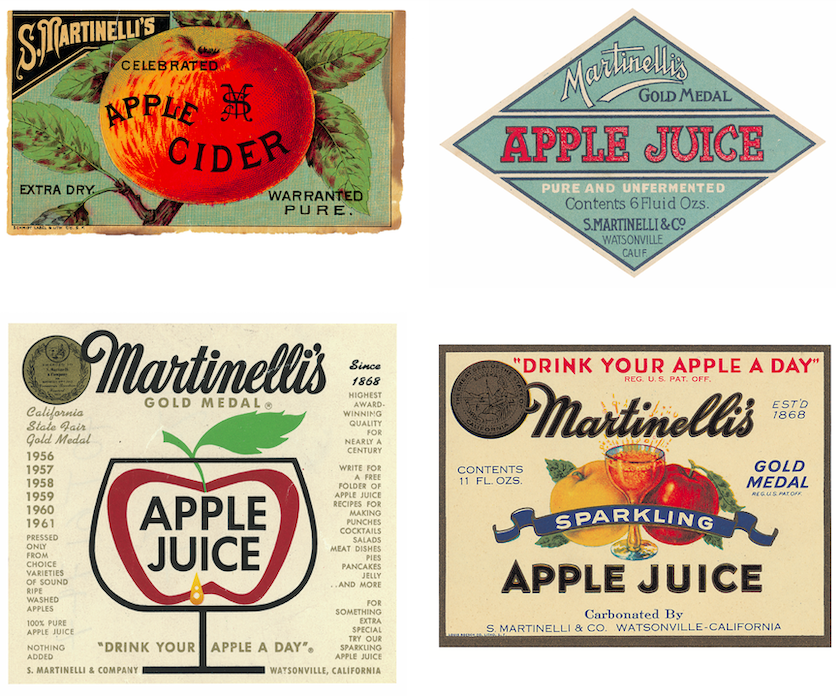
Martinelli's
Enter: apple juice. Non-alcoholic apple juice quickly became popular across the United States (and was only truly given a run for its money by that breakfast giant: orange juice). Though it's funny that a drink evoking visions of juice boxes has such a boozy antecedent, today, of course, you can find apple juice and apple cider on grocery store shelves everywhere.
The Difference Between Apple Juice and Apple Cider
So what's the exact distinction? Fresh apples are central to producing both cider and juice. For cider, apples are washed and cut into a mash that looks akin to applesauce. Then the liquid is squeezed out-and is called "apple cider." Because fresh cider is usually minimally processed and unpasteurized, and doesn't have added preservatives or sweeteners, it generally has a shorter shelf life and must be refrigerated.
That cider is filtered and pasteurized (cooked over heat) to make it shelf-stable-and transform it into apple juice. The filtration process removes any of the coarse, pulpy particles, and pasteurization kills the bacteria, extending the shelf life of the apple drink.
Basically, apple cider is unfiltered apple juice. But that's a distinction only made by some states (for example, Massachusetts) and certain producers. Some producers, somewhat confusingly, eschew the distinctions we laid out above: Martinelli's, for example, explains on its site that the only difference between their apple juice and apple cider is their labels. (Both are 100% apple juice; both look filtered; both are pasteurized.) They also offer an unfiltered apple juice, which we imagine delivers a somewhat more cider-y vibe.
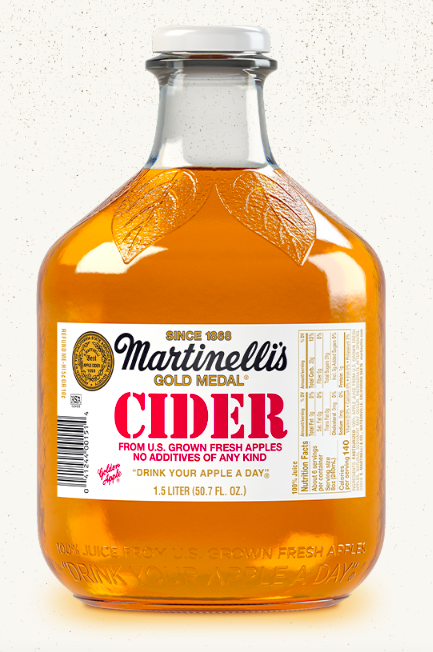
Martinelli's
Indeed, if you want the raw cider experience-non-alcoholic, that is-usually the "weather" of the bottle can be your guide: Cider is typically cloudy, while apple juice is generally clear.
Does Apple Juice Taste Different Than Apple Cider?
Because apple cider is unfiltered, it typically has a stronger, denser, more luxe apple flavor. (If you see something called spiced cider, that's apple juice or apple cider that has been pre-mixed with spices like cinnamon, nutmeg, and cloves.) Of course, you can also make your own hot apple cider with mulling spices for a fall treat-and add booze such as dark rum or bourbon for a lovely apple cider cocktail.
And yes, you can totally use apple juice for a cocktail, too-such as this tasty gin and juice drink.
Final parting tip, folks: The liquid apple product that definitely tastes different from cider, juice and hard cider is apple cider vinegar. If you don't refrigerate apple cider, it will ferment into apple cider vinegar. While, yes, technically you can drink it (and some tout the health benefits of having a tablespoon or two diluted in a daily drink or shrub), it's highly acidic. One 15-year-old rotted her teeth by drinking a glass of it every day- so don't do that, please.
We'll be sticking to cider and juice, thanks!
READ MORE: How to Choose the Best Apples for Apple Pie
This article was originally published on September 30, 2019.
